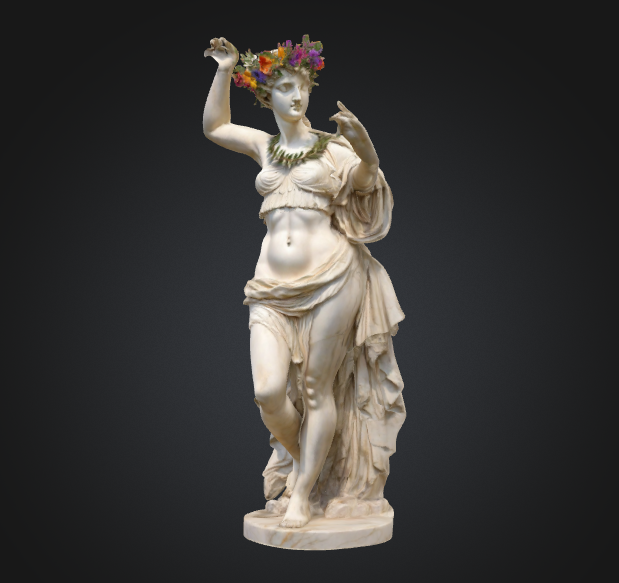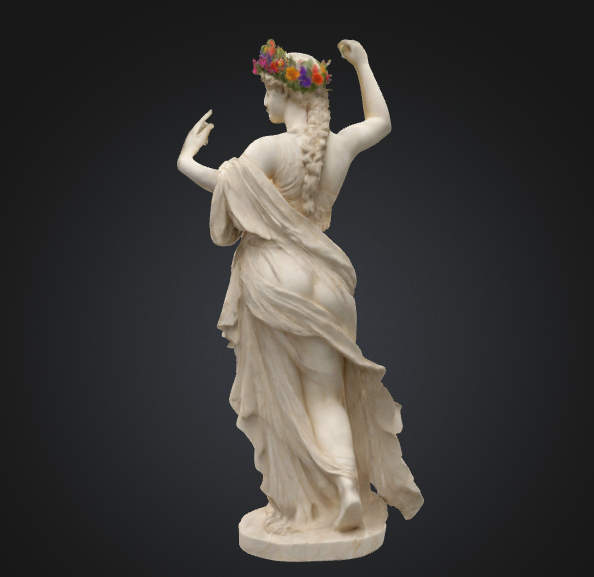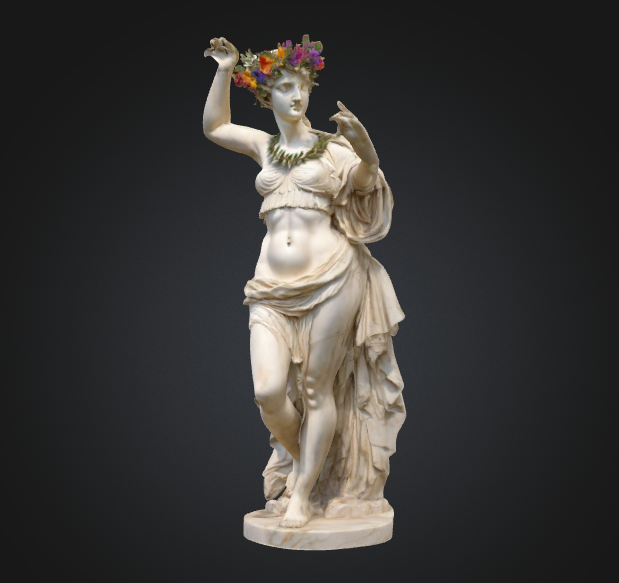Creative Preview
Created in 1778 by renowned sculptor Antonio Canova, this masterpiece was commissioned by the Duke of Pemberton to commemorate his late wife, Eleanora, who was known for her grace and love of gardens. Canova, breaking from tradition, left specific instructions that fresh flowers should always adorn the statue's head, symbolizing the cycle of life continuing beyond death. For decades, the statue stood in the gardens of Pemberton Estate, where gardeners faithfully changed the floral crown each morning. Visitors often remarked that the flowers never seemed to wilt while adorning the statue, regardless of the season or weather. When financial hardship forced the Pemberton family to sell their estate in 1842, they insisted on a peculiar condition—that the statue's floral crown tradition must continue.
Flora's Eternal Dance is an elegant marble sculpture depicting a graceful female figure in the classical Greco-Roman style. Standing approximately 5 feet tall on a circular base, the figure is captured in mid-movement, with one arm raised above her head in a delicate gesture while the other extends outward with fingers poised as if beckoning. She wears flowing drapery that clings to her form, revealing the skillful rendering of the female anatomy beneath while maintaining a sense of modest concealment through strategic folds.



